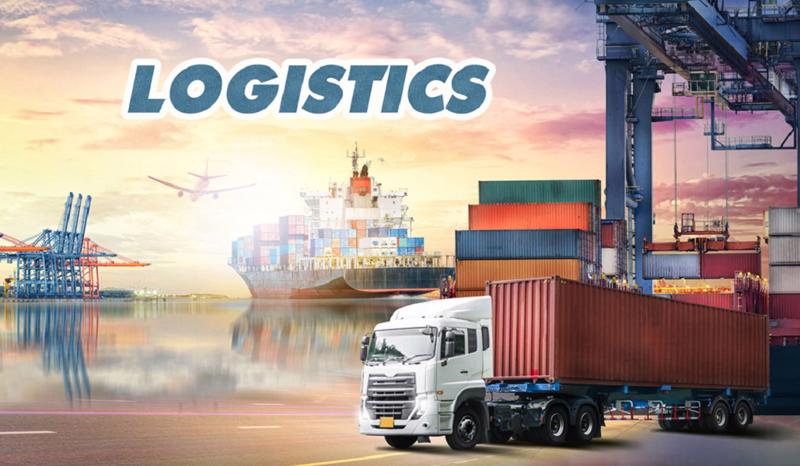Top Logistics Hubs in Vietnam and Why They Matter

Unlocking Vietnam’s Strategic Trade Infrastructure for the Global Market
Vietnam’s transformation into a global manufacturing and export powerhouse has been underpinned by its evolving logistics landscape. From bustling seaports to strategic inland hubs, the country’s logistics infrastructure has become a cornerstone of its economic competitiveness. As Vietnam gears up for further integration into ASEAN, CPTPP, and RCEP trade networks, understanding the country’s top logistics hubs is essential for any investor, exporter, or supply chain strategist.
In this blog, we explore Vietnam’s leading logistics hubs, what makes them essential, and how businesses can leverage their advantages.
Why Logistics Hubs Matter in Vietnam
Vietnam’s logistics hubs serve as gateways for trade, supporting:
-
Import/export processing
-
Inland freight movement
-
Cross-border e-commerce fulfillment
-
Container consolidation and distribution
These hubs significantly impact supply chain efficiency, customs clearance, and overall cost competitiveness. According to the World Bank’s Logistics Performance Index, Vietnam ranks among the top emerging markets in logistics potential.
🔗 See Vietnam’s latest LPI ranking on World Bank’s Logistics Performance Index.
1. Hai Phong: The Logistics Engine of Northern Vietnam
Hai Phong Port is the largest port in northern Vietnam, handling cargo for Hanoi, Bac Ninh, Hai Duong, and other key manufacturing provinces. It plays a critical role for industries in the Red River Delta.
Key Highlights:
-
Home to the Lach Huyen International Gateway Port (deep-water).
-
Connected to the Hanoi–Hai Phong Expressway and rail lines.
-
Supports high-volume trade with China, Korea, and Japan.
Hai Phong is ideal for companies manufacturing in northern Vietnam and exporting to Northeast Asia or North America.
🔗 More on Hai Phong port development at Vietnam Seaports Association.
2. Ho Chi Minh City & Cat Lai Port: Southern Vietnam’s Trade Nucleus
Ho Chi Minh City is not only Vietnam’s commercial capital but also its largest logistics hub by volume. The Cat Lai Port in District 2 is the busiest container port in Vietnam.
Strengths:
-
Proximity to industrial parks in Binh Duong, Dong Nai, and Long An.
-
Efficient customs services and bonded warehouse zones.
-
Access to Tan Son Nhat Airport and transshipment routes.
Its dense concentration of third-party logistics (3PL) providers makes it a preferred location for international freight forwarders and e-commerce fulfillment.
🔗 Learn about Cat Lai Port logistics at Saigon Newport Corporation.
3. Cai Mep – Thi Vai: Deep-Sea Connectivity to Global Markets
Located in Ba Ria–Vung Tau province, Cai Mep is one of the few Vietnamese ports that can receive large Panamax vessels. It’s increasingly recognized as Vietnam’s gateway to Europe and the U.S., bypassing transshipment in Singapore.
Why It Matters:
-
Hosts terminals operated by Maersk, CMIT, and APM Terminals.
-
Offers direct shipping routes to the Americas and Europe.
-
Strategically complements HCMC ports with overflow capacity.
With ongoing investments, including smart port infrastructure, Cai Mep is being primed as Vietnam’s most advanced deep-sea hub.
🔗 Read about international investment in Cai Mep at Vietnam Investment Review.
4. Da Nang: Central Vietnam’s Emerging Trade Connector
As the principal port in central Vietnam, Da Nang Port supports logistics in Thua Thien–Hue, Quang Nam, and Da Nang city. The Tien Sa Terminal plays a key role in central Vietnam’s import-export supply chain.
Advantages:
-
Growing IT and electronics manufacturing base in Da Nang.
-
Near Chan May Port, which supports bulk and break-bulk cargo.
-
Close proximity to Laos and Thailand via the East-West Economic Corridor (EWEC).
Da Nang is increasingly attractive for infrastructure and logistics startups targeting Central and Western ASEAN.
🔗 Explore the EWEC at ADB’s Greater Mekong Subregion Program.
5. Long Thanh & Long An: Inland Logistics & Warehousing Powerhouses
With congestion rising at southern ports, inland logistics hubs are becoming key to decentralization. Long Thanh and Long An provinces now host sprawling industrial zones, inland container depots (ICDs), and logistics parks.
Strategic Value:
-
Support cross-border trade with Cambodia.
-
Offer lower real estate costs for warehouses and cold chain storage.
-
Positioned near the upcoming Long Thanh International Airport.
These inland hubs are vital for freight consolidation, last-mile delivery, and reverse logistics.
🔗 See planned infrastructure around Long Thanh Airport at Vietnam Government Portal.
6. Lao Cai & Lang Son: Gateways to China Trade
Northern border provinces like Lao Cai and Lang Son are crucial for Vietnam–China logistics. These hubs handle agricultural exports, electronics, and bulk raw materials.
Benefits:
-
Direct access to Chinese provinces via expressways.
-
Border economic zones with bonded logistics.
-
Vital for cross-border trucking and rail freight.
🔗 Vietnam’s Ministry of Industry and Trade updates border trade policies here.
How to Leverage These Hubs for Business Growth
Whether you’re sourcing goods, exporting products, or investing in infrastructure, tapping into the right logistics hub can dramatically affect your costs, delivery timelines, and service quality.
Here’s how:
-
Evaluate proximity to suppliers and buyers.
-
Use bonded warehouses to defer customs duties.
-
Partner with agents who specialize in each region’s regulations and capacity.
-
Utilize multimodal transport (rail + sea + road) to optimize delivery routes.
🔗 Need help? Use Vietnam-Agent.com to connect with local logistics experts and supply chain partners.
Final Thoughts
Vietnam’s logistics evolution is no longer just about ports—it’s about ecosystems. From deep-sea terminals and special economic zones to smart warehousing and inland hubs, these logistics centers are defining the nation’s future in global trade.
As Vietnam climbs the value chain in electronics, automotive, and green manufacturing, companies that align their logistics strategy with these hubs will outperform competitors in speed, reliability, and adaptability.
Explore more logistics topics: